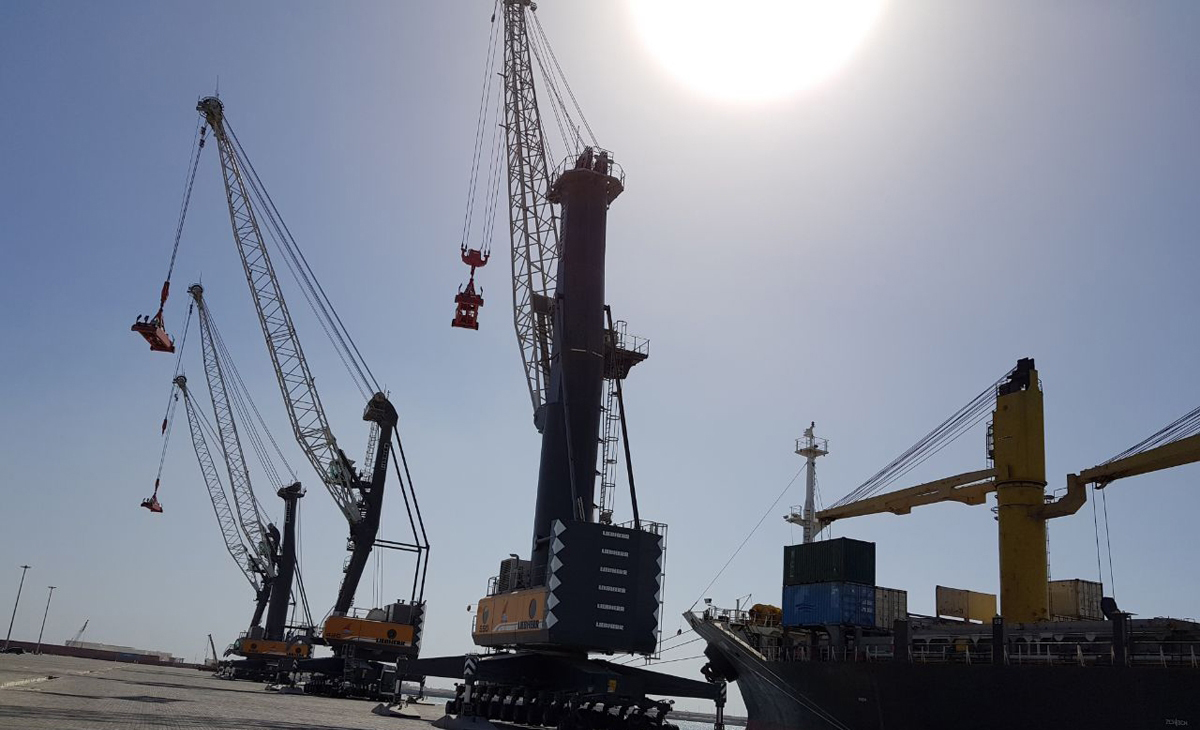Iran’s southeastern Chabahar Port can be seen from two viewpoints. From the viewpoint of empowering less-developed regions of Iran, it shows that in their drive to develop the southeastern part of the country, the Iranian government and nation are resolved to create a developed zone on a territory, which is commonly known as “Makran Coast”.
These are almost forgotten coasts whose crown jewel is Chabahar and are on the path to achieve an acceptable level of development to become a model of spatial planning for the entire Iran, reads an article penned by Professor Bahram Amirahmadian at University of Tehran’s Faculty of World Studies and published in Eurasia Review. Excerpts follow:
The second viewpoint sees Chabahar as a logistics hub, which can connect Afghanistan and Central Asia to international waters through the shortest route and the most efficient logistic structure and port services.
Iran, Afghanistan, India Triangle
Chabahar Free Trade and Industrial Zone, as an infrastructure for economic and trade activities, is ready to attract foreign investment and remarkable developments have already taken place there to turn it into an active economic zone.
In the meantime, cooperation between India and Iran for establishing port and rail infrastructures to facilitate connection to Afghanistan has led to a trilateral agreement among Iran, India and Afghanistan, which promises a bright future for that region.
As two strategic allies, India and Afghanistan have been facing problems created by Pakistan, as a third country, for getting connected to each other. Therefore, after overarching assessments, they reached the conclusion that they should get connected through the shortest possible route, which was Iran, where Chabahar was determined as the best linking point between the two countries.
In this way, all three sides to the trilateral agreement started a win-win game. There are valuable mines in the northwestern part of Afghanistan, which cannot be exploited under the present circumstances. The government of Afghanistan needs foreign revenues to rebuild the country. The value of Afghanistan’s mineral reserves has been estimated at billions of dollars. However, minerals in their original form are voluminous and less valuable. Therefore, rail structures are needed for their export.
India is a customer of Afghanistan’s raw minerals in order to turn them into mineral products.
Iran, in the meantime, can play a key role in connecting these two countries. The Iran-Afghanistan Railroad, which is being constructed through national investment in cooperation with India, will travel from Chabahar up to the city of Zahedan, from which point it will continue up to the Afghan city of Zaranj.
Iran’s Khaf Railroad in Khorasan Razavi Province is going to be connected to the Afghan city of Herat in the near future while a railroad is going to be constructed to connect Herat to the city of Mazar-i-Sharif on its way to Uzbekistan.
All these projects delineate the future roadmap for the development of Chabahar, which will lead to a major development in the entire region.
Afghanistan has no access to free waters and this has proven to be a major obstacle on the way of the country’s development. The country can only access free waters through its eastern and western neighbors, that is, Iran and Pakistan.
Pakistan’s Karachi Port has been so far the sole way for Afghanistan to get access to free waters. However, as Afghan officials have said time and again, Pakistan has frequently violated all agreements signed by the two countries and this has been an obstacle to Afghanistan’s optimal use of Karachi and further development of economic and trade relations between Kabul and Islamabad.
Incentives for Investment
Known as the gateway to the development of eastern Iran, Chabahar enjoys good conditions for investment. In addition, special incentives have been considered for Chabahar to encourage investment there, which can attract profitable ideas to that zone. These incentives include offering guarantees for investment based on the “Encouragement and Support of Foreign Investment in Iran Act,” and the possibility of transferring abroad 100% of the principal capital and the profit emanating from the activities of all foreign persons.
A 100% tax exemption on income and property for 20 years, which can be extended; exemption on customs duties for importing machinery and raw materials by production units; waiver of general export and import regulations for exporting products produced in the zone; and customs exemption on products manufactured by industrial units in the zone for export to the mainland equivalent to the added value created through the use of domestic raw materials are other incentives considered for industrial units active in Chabahar.
Those investing in Chabahar are allowed to use foreign workforce up to 10% of the total workforce in this zone and are also allowed to embark on retail sales of their products.
Other incentives considered for this zone include long-term sale and lease facilities for foreign investors, according to which foreign investors can own 100% of the shares of companies established by foreign nationals.
At the same time, Chabahar takes advantage of resilient laws and regulations with regard to the manpower working in this zone. Investors are also authorized to engage in such activities as cargo loading and unloading, transit and transshipping while availing themselves of exemption from customs duties, except for warehousing and transport expenses. They can also take advantage of bank facilities to implement investment projects and establish domestic and foreign banks and insurance firms or their branches in Chabahar Free Trade and Industrial Zone.


